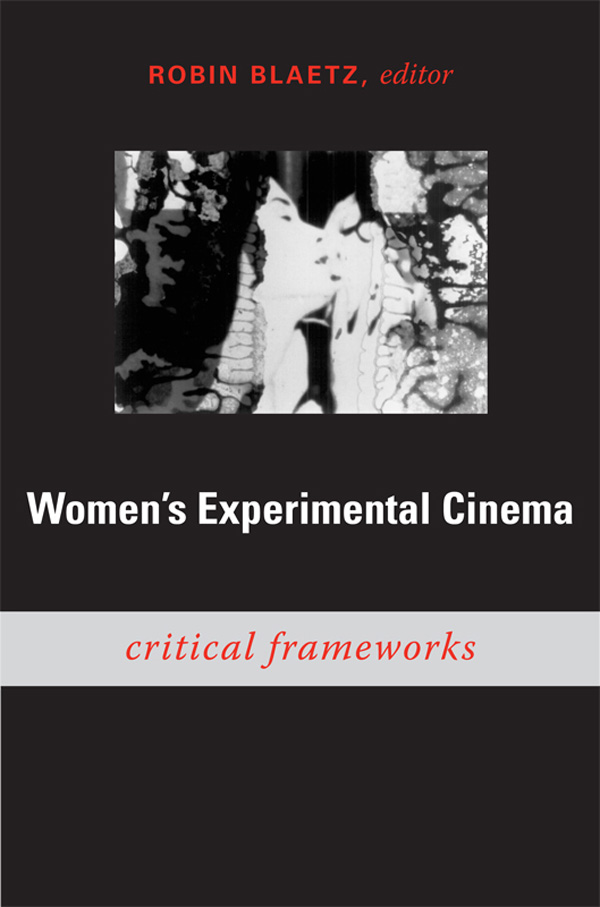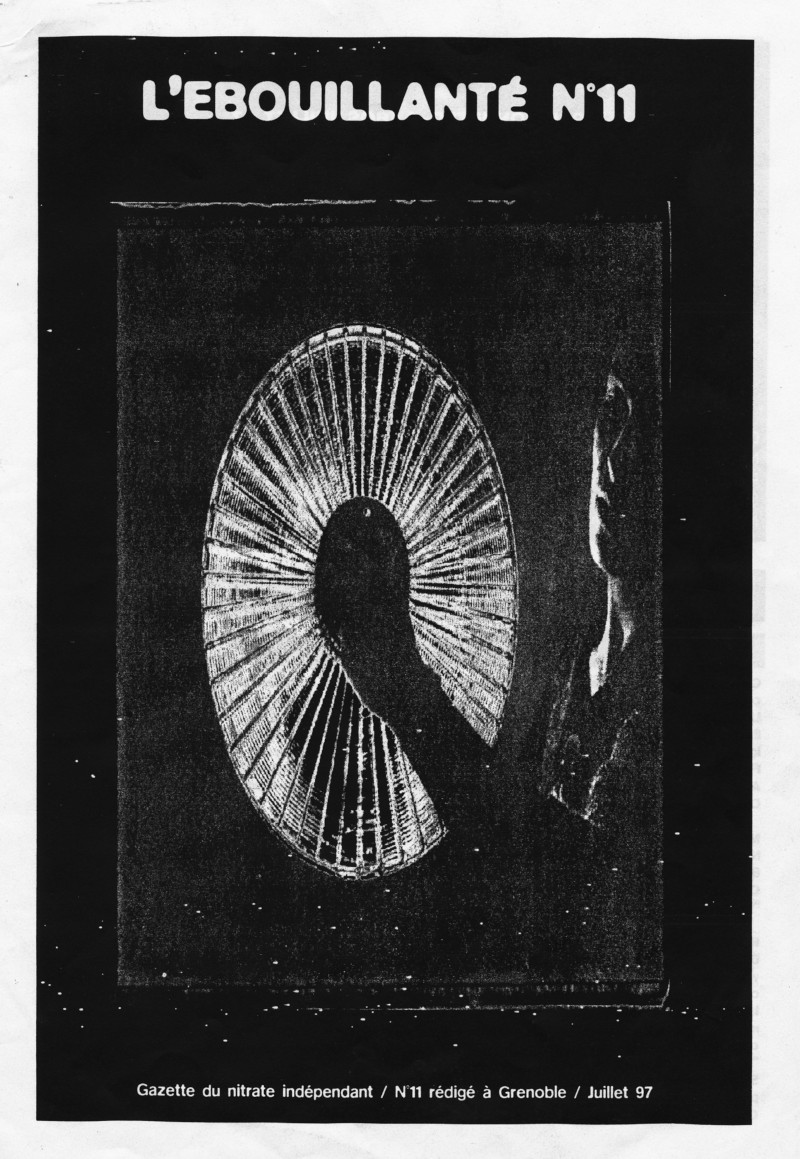Robin Blaetz (ed.): Women’s Experimental Cinema: Critical Frameworks (2007)
Filed under book | Tags: · avant-garde, body, cinema, experimental film, feminism, film, film criticism, film history, women

“Women’s Experimental Cinema provides lively introductions to the work of fifteen avant-garde women filmmakers, some of whom worked as early as the 1950s and many of whom are still working today. In each essay in this collection, a leading film scholar considers a single filmmaker, supplying biographical information, analyzing various influences on her work, examining the development of her corpus, and interpreting a significant number of individual films. The essays rescue the work of critically neglected but influential women filmmakers for teaching, further study, and, hopefully, restoration and preservation. Just as importantly, they enrich the understanding of feminism in cinema and expand the terrain of film history.
The contributors examine the work of Marie Menken, Joyce Wieland, Gunvor Nelson, Yvonne Rainer, Carolee Schneemann, Barbara Rubin, Amy Greenfield, Barbara Hammer, Chick Strand, Marjorie Keller, Leslie Thornton, Abigail Child, Peggy Ahwesh, Su Friedrich, and Cheryl Dunye. The essays highlight the diversity in these filmmakers’ forms and methods, covering topics such as how Menken used film as a way to rethink the transition from abstract expressionism to Pop Art in the 1950s and 1960s, how Rubin both objectified the body and investigated the filmic apparatus that enabled that objectification in her film Christmas on Earth (1963), and how Dunye uses film to explore her own identity as a black lesbian artist. At the same time, the essays reveal commonalities, including a tendency toward documentary rather than fiction and a commitment to nonhierarchical, collaborative production practices. The volume’s final essay focuses explicitly on teaching women’s experimental films, addressing logistical concerns (how to acquire the films and secure proper viewing spaces) and extending the range of the book by suggesting alternative films for classroom use.”
Contributors: Paul Arthur, Robin Blaetz, Noël Carroll, Janet Cutler, Mary Ann Doane, Robert A. Haller, Chris Holmlund, Chuck Kleinhans, Scott MacDonald, Kathleen McHugh, Ara Osterweil, Maria Pramaggiore, Melissa Ragona, Kathryn Ramey, M. M. Serra, Maureen Turim, William C. Wees.
Publisher Duke University Press, Durham, NC, 2007
Open access
ISBN 9780822340232, 0822340232
viii+421 pages
Reviews: Harriet Margolis (NWSA Journal, 2009), Beth Hutchison (Signs, 2009), Gwendolyn Audrey Foster (Quarterly Review of Film and Video, 2011), Jan-Christopher Horak (Screening the Past, 2008), David Sterritt (Cineaste, 2008), Phoebe Hart (M/C Reviews, 2008).
Comment (0)Chris Robé: Breaking the Spell: A History of Anarchist Filmmakers, Videotape Guerrillas, and Digital Ninjas (2017)
Filed under book | Tags: · activism, aesthetics, aids, anarchism, autonomy, direct action, ecology, film, indigenous peoples, labour, marxism, media activism, neoliberalism, politics, protest, punk, social movements, strike, third cinema, video, video activism, video art

“Breaking the Spell offers the first full-length study that charts the historical trajectory of anarchist-inflected video activism from the late 1960s to the present. Two predominant trends emerge from this social movement-based video activism: 1) anarchist-inflected processes increasingly structure its production, distribution, and exhibition practices; and 2) video does not simply represent collective actions and events, but also serves as a form of activist practice in and of itself from the moment of recording to its later distribution and exhibition. Video plays an increasingly important role among activists in the growing global resistance against neoliberal capitalism. As various radical theorists have pointed out, subjectivity itself becomes a key terrain of struggle as capitalism increasingly structures and mines it through social media sites, cell phone technology, and new “flexible” work and living patterns. As a result, alternative media production becomes a central location where new collective forms of subjectivity can be created to challenge aspects of neoliberalism.
Chris Robé’s book fills in historical gaps by bringing to light unexplored video activist groups like the Cascadia Forest Defenders, eco-video activists from Eugene, Oregon; Mobile Voices, Latino day laborers harnessing cell phone technology to combat racism and police harassment in Los Angeles; and Outta Your Backpack Media, indigenous youth from the Southwest who use video to celebrate their culture and fight against marginalization. This groundbreaking study also deepens our understanding of more well-researched movements like AIDS video activism, Paper Tiger Television, and Indymedia by situating them within a longer history and wider context of radical video activism.”
Publisher PM Press, Oakland, CA, 2017
ISBN 9781629632339, 1629632333
x+469 pages
Interview with author: The New Architects (video, 2017, 43 min).
Reviews: Beth Geglia (Interface, 2017), Franklin Lopez (Fifth Estate, 2017), Patricia R. Zimmerman (Jump Cut, 2018), Allan Atliff (Anarchist Studies, 2017).
PDF (16 MB)
Academia.edu (author)
L’ébouillanté, 1-15 (1995-1999) [French]
Filed under zine | Tags: · cinema, experimental film, film

“L’ébouillanté came into existence at the onset of the online era. The zine was created following a meeting of film labs in Grenoble in 1995 and published by the participating labs. The publication served as an informational link between labs and a source of technical and practical knowledge for materials on cinema.
It was conducted by, amongst others, L’Abominable (Paris), Mire (Nantes), MTK (Grenoble), Les films de la belle de mai (Marseille), Elu par cette crapule (Le Havre), Molodoi (Strasbourg), Zebra Lab (Geneva), Studio Een (Rotterdam), and Kino-Trotter (Brussels).”
PDFs
Issue PDFs: 1, 2, 3, 4, 5, 6, 7, 8, 9, 10, 11, 12, 13, 14, 15

